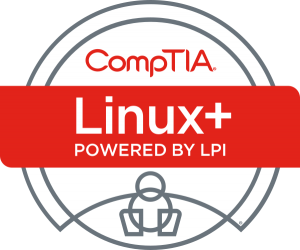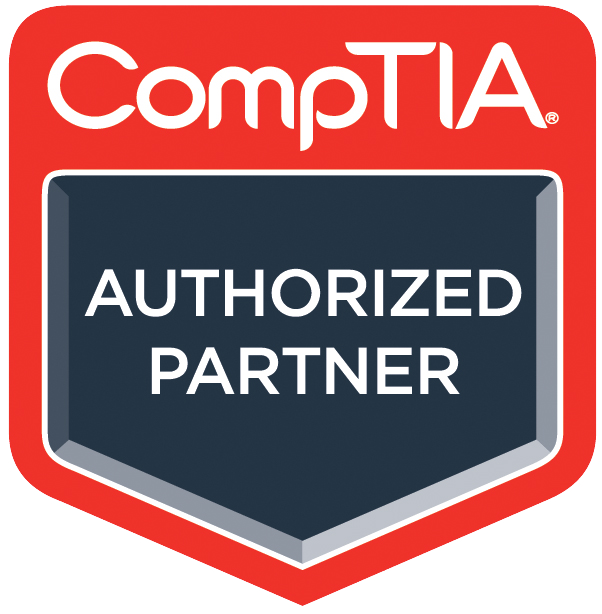Overview
Courses Benefits
Linux is the open source operating system of choice for deployment throughout the enterprise. In this course, you gain the essential knowledge and skills required to leverage the wide range of Linux graphical and command line tools. CentOS - a Linux distribution that is based on Red Hat Enterprise Linux (RHEL), as well as Ubuntu are both used for this course.
This course will help you prepare for the CompTIA Linux+ certification — a highly-valued certification for Linux administrators.

To attain CompTIA Linux+ certification, you need to pass the exam XK0-004. This course and Course 522 - Linux Network Administration will prepare you for the XK0-004 exam.
ActiveLearning is an Authorized CompTIA Partner.

You Will Learn How To
- Use essential command line tools
- Manage software using package managers
- Install and layout the file system using well-known standards
- Manage users and their environments
- Manage processes effectively
- Manage disks and file systems (including quotas)
Who Should Attend
Course Outline
Introduction to Linux
- Characteristics of the Linux Operating System
- Linux System Architecture
- Basic terminology
Accessing Your System
- Basic terminology
- Logging in
- The /etc/passwd file
- Changing Your Password
- Logging Out
- Shutting Down the System
- Rebooting the System
Using Documentation
- man
- apropos
- whatis
- info
Navigating the File System
- Absolute and Relative Path Names
- Displaying the Current Directory
- Changing Directories
- Listing Directory Contents
- Wildcards
- Creating Directories
- Removing Directories
File Commands
- Copying Files
- Moving and Renaming Files
- Deleting Files
- Creating Symbolic Links
- Displaying Files with cat, less, head, and tail
- Creating Empty Files
- Comparing Files
- Compressing and Decompressing Files
Locating Files in the File System
- The File System Hierarchy
- locate
- updatedb
- find
- whereis
Regular Expressions
- What are Regular Expressions?
- Creating regular expressions
- Finding strings within files using grep
Metacharacters and Redirection
- Understanding Text Streams
- Understanding Metacharacters
- Entering multiple commands in a single line
- Entering string patterns in commands
- Redirecting output to a files
- Appending to an existing file
- Using a file as input to a commands
- Using the output of one command as input to another
- Using the output of one terminal as input to another
GUIs
- GUI
- Display Servers
- Desktop Environments
- Using GNOME
- Using Nautilus File Manager
vi Text Editor
- vi Modes
- Invoking vi
- Insert Commands
- Positioning Commands
- Editing Commands
- Copying and Pasting
- Saving and Quitting
- Advanced Editing Options
- Find and Replace
Shell and Environment Variables
- Variables
- Creating Shell Variables
- Displaying Shell Variables
- Promoting Shell Variables to Environment Variables
- Creating Environment Variables
- Displaying Environment Variables
- Deleting Variables
Configuring Bash
- The PATH Environment Variable
- The which command
- Viewing previously entered commands
- Re-executing commands
- Creating Aliases
- Displaying Aliases
- Deleting Aliases
- Customizing the Prompt
- Other Shell Options
Initialization Files
- The Shell Initialization Files
- Login Sequence
- Administration of Default User Initialization Files
User Security
- Authentication Methods
- Users and Groups
- Displaying User and Group Information
- Displaying Group Information
- Becoming the Superuser
- Executing root Commands without Logging in as root
- Becoming a Different Users
- Changing File Ownership
- Changing a File's Group Ownership
- Learning Who is Logged In
- Specifying User Limits
User and Group Administration
- Essential files for users and groups
- Adding, deleting, and modifying user accounts
- Managing groups
- Password aging
- The /etc/skel directory
- Locking an account
- Graphical user and group administration
File Security
- Permissions
- Permission Categories
- Permission Typess
- Changing Permissions
File Systems
- Understanding File System Concepts
- Understanding Linux's Device Naming Scheme
- Checking File System Integrity
- Mounting and Unmounting File Systems
- Monitoring Disk Space
- Monitoring Disk Usage
- Managing Partitions
- Creating a File System
- Viewing and Changing Disk Labels
- Other ext File System Tools
- Other xfs Tools
- Monitoring I/O Usage
- Displaying Block Storage Info
Disk Quotas
- Disk Quotas
- Limits
- Steps to enable Quotas
- Viewing Quota Usage
Archiving
- Understanding Backup Concepts
- Backing up and Restoring Files using tar
- Compressing Files using gzip, bzip, and xz
- Other Tools for Backing Up
- Checking File Integrity – md5sum and sha
Process Control
- Understanding Process States
- Job Control
- Keeping track of jobs
- Running a job in the foreground
- Running a job in the background
- Terminating a job
- Listing processes
- Monitoring processes
- Sending signals to processes
- Terminating processes
- Process priorities
Scheduling Tasks
- Running tasks at a specified time -- at
- Scheduling recurring tasks – cron
- Restricting access to task scheduling
Booting Up
- The boot sequence
- The init process
- Runlevels
- Changing runlevels
- Changing the default runlevel
Log Files
- Log files and the rsyslogd Daemon
- Configuring rsyslogd -- rsyslog.conf
- Log Utilities
- Rotating Logs
- Viewing Logs – journalctl
- Displaying History of User Log Ins and Logouts - last
- Viewing Logs in a GUI
- Graphical Tool
Installation
- Hardware requirements
- Installing CentOS
- Installing Ubuntu
- Setting the System Date and Time
- Setting the Timzeone
- Setting the System Locale
- Setting the Keyboard Layout
Boot Managers
- Boot Loaders
- Master Boot Record
- LILO
- GRUB
Installing Software
- RPMs vs DEBs
- Installing packages using RPM
- RPM options
- Removing packages using RPM
- YUM
- Installing packages using DEB
- DEB options
- Removing packages using DEB
- Aptitude
- Graphical tools for software management
- Managing Shared Libraries





